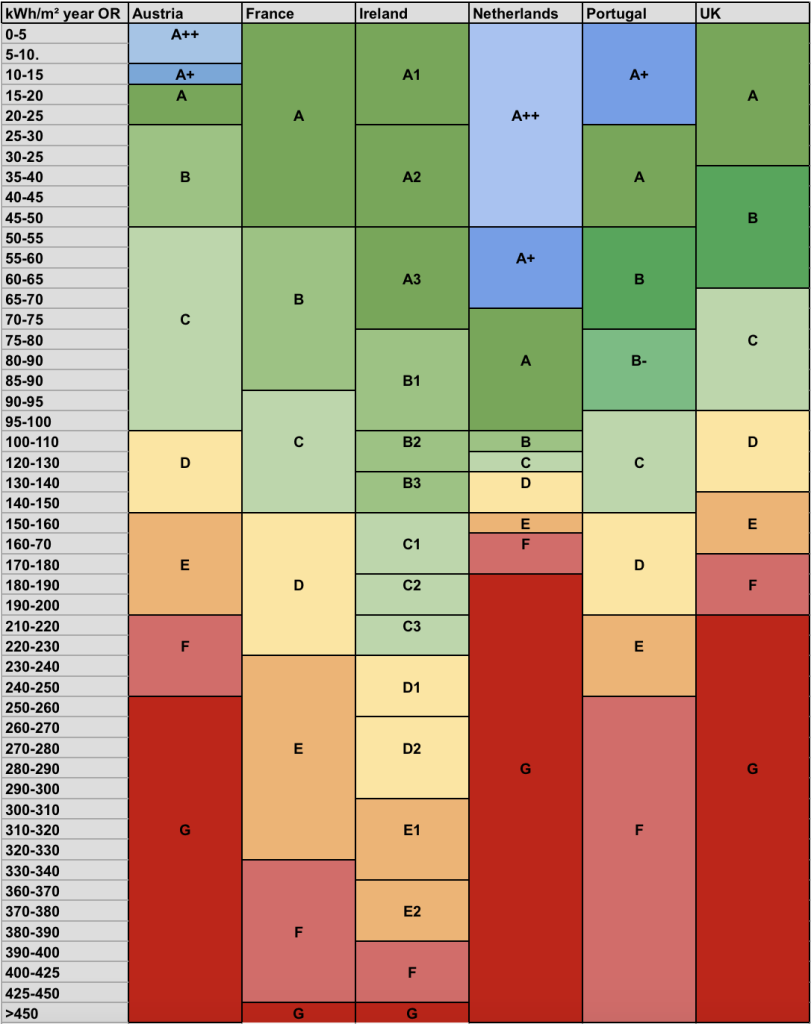Check out the summarised version on LinkedIn: https://www.linkedin.com/feed/update/urn:li:activity:7122477876213358592
In today’s world, sustainability is a topic of paramount importance. However, interpreting energy efficiency labels can be anything but straightforward—particularly in Europe’s culturally diverse landscape.
You see, labels often convey different meanings than what we might initially think. Energy efficiency labels provide a striking example. While a table graph of these labels may not initially captivate your attention, it raises a critical issue regarding energy consumption across Europe. We picked out a few countries to get our point across.
In essence, this visual representation gauges a building’s or property’s energy efficiency. To simplify, “kWh/m² year OR” denotes the amount of energy used, and the A-G rating represents the Energy Efficiency Ratings (EER), with A denoting the most efficient and sustainable rating and G signifying the worst rating, obviously.
The crux of the matter is that these labels bear significantly different interpretations from one European country to another. This diversity can potentially lead to confusion when evaluating how sustainable a building truly is. For example, achieving an A rating in the Netherlands is far easier than in Ireland. Conversely, securing a G rating in Ireland is impressively tough, while the criteria are much more stringent in the Netherlands.
Not to mention that an A rating has a completely different meaning in the Netherlands seeing as it’s third place to the A++, and the A+ rating. Then of course you’ve got countries with multiple B ratings. I won’t bore you with the different ratings, but the point is that these countries have vastly different labels, which makes it impossible to compare, and get a clear grip on how energy efficient a building is when venturing in a country other than your own.
To address this challenge, the DGBC (Dutch Green Building Council) promotes a perspective that concentrates on actual energy consumption. As a leading national organization, DGBC stands at the forefront of rapidly transforming the built environment to pave the way for a sustainable future. Their motivation derives from a profound understanding of the substantial impact the built environment has on climate change.
In closing, remember to remain vigilant when interpreting these labels. Delving deeper into their true significance can be an enlightening journey, as it is often not as straightforward as it may seem at first glance.
For more information on our source, check out: https://eurodw.eu/the-babel-tower-of-energy-performance-certificate-ratings-and-databases-in-europe/

